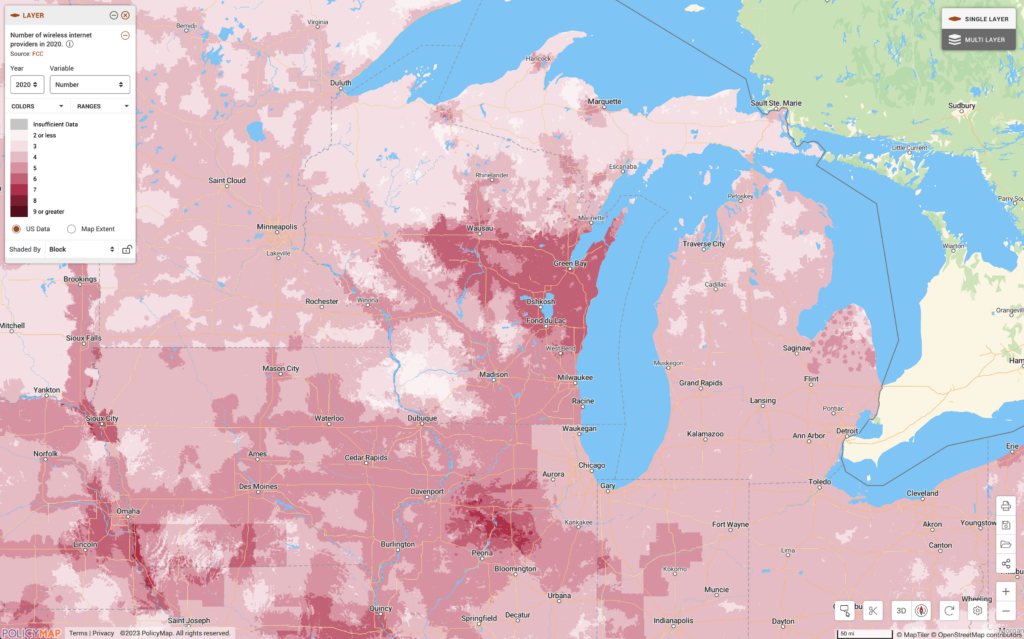Going Beyond Census Data: Better Community Analysis For Public Libraries

Reviewing trends in demographic data reveals what local communities look like and how they are changing. State, District, and local libraries rely on data from the U.S. Census Bureau to inform decisions about the distribution of funds and assistance to the locations with the most need. Community stakeholders determine where to build new branches, host programs, and find their most vulnerable patrons based on census data.
But to improve services, programs, and resources, to plan strategically for the future, and to realize your library’s full potential, consider going beyond demographics.
Digging Deeper: Data-Driven Insights Power Smarter Decisions
Broadening the data collection net beyond the ultra-important neighborhood-level demographic data from the Census and the American Community Survey (ACS) allows you to better identify community needs and close service gaps. By examining economic, social, health, and/or housing datasets that shed light on other issues beyond population, age, language, race, and ethnicity, you can support all the members of your community.
Consider digging deeper into:
- Digital Equity: Understand internet availability, speed, technology, number of providers (wired and wireless) with FCC Broadband deployment data. Access to broadband ensures access to the growing number of digital resources in your library like e-books, movies, audiobooks, digital magazines, and newspapers.

- Library-School Partnerships: Access education data from GreatSchools™ to investigate public and private school performance.
- Food Insecurity: Look at hunger on the state and local level. Understand overall food insecurity rates, child food insecurity, percent of insecure eligible for National Nutrition Assistance, and food-budget shortfall in your community.
- Public Transportation Access: Data on access to transportation and walkability is especially important for suburban and rural libraries.
- Community Health: Health is profoundly linked to where people live. Health and social determinants of health (SDoH) data can help your library identify areas with a higher incidence of chronic health conditions, higher crime rates, less access to medical care, higher health costs, and a lack of insurance coverage.
- Social Vulnerability: The Social Vulnerability Index provides insight into neighborhoods with the greatest need for library materials, safe havens, community connection and homework help, and growth opportunities.
Leveraging additional place-based data resources can also help your library locate community advocates and stakeholders:
- Identify places to engage with community partners outside the physical library, i.e., nonprofit locations, museums, schools, and parks.
- Consider novel places and methods of providing access to the library’s resources, i.e., waiting rooms at federally qualified health centers, nursing facilities, and hospitals.
- Discover new donors with IRS data. Your development department can view those zip codes with higher incomes and a significant percentage of charitable contributions in their service area.
Ready-To-Use Community Data Resources from PolicyMap
Wondering “How do I find information about my library’s community?” PolicyMap has the web’s largest collection of geographic data. Our data comes from hundreds of disparate sources, but is standardized to allow for simple analysis across indicators.
Through PolicyMap, your internal measures like circulation, visits, collection, acquisitions, electronic resource usage, reference/chat transactions, and library instruction sessions can be aggregated and layered with community-level data on computer and internet access, transportation, social determinants of health, health outcomes, educational attainment, graduation rates, and more. Visualizing the combined datasets produces unparalleled community insights; leading to improvements in cardholder engagement, in collection development, and in addressing service area needs.
Improve Your Library’s Community Analysis with Better Data
Interested in digging deeper into your own community analysis? Fill in the form below to schedule time to learn more about how PolicyMap allows librarians to combine Census and ACS data with other place-based data to uncover powerful community insights. We work with state, district and local libraries across the U.S. on planning, developing, and evaluating their services. We also support incredible library consultants who develop community and demographics analysis for public libraries.